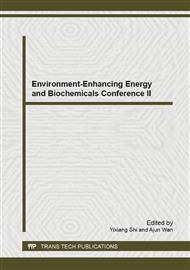p.1
p.11
p.17
p.23
p.27
p.33
p.43
p.51
Mechanical Properties of Methylcellulose-Based Films Containing Stearic Acids
Abstract:
The effect of the homogenization conditions of the film-forming emulsions on the mechanical properties of Methylcellulose (MC)-based films containing stearic acids (SA) was studied. For this purpose, the initial emulsions were prepared in different dry matter ratios and treated by different homogenization methods. The mechanical properties, including elastic modulus (EM), tensile strength (TS) and elongation (E) became worse with the increase of the SA content. Then the mechanical properties were compared as a function of the polyethylene glycol 400 (PEG-400) contents. As a plasticizer, the increasing of PEG-400 could improved E greatly, but EM and TS both declined slightly. And finally, when homogenization conditions were more intense, EM and TS increased significantly while E showed a fairly smooth curve.
Info:
Periodical:
Pages:
23-26
Citation:
Online since:
February 2013
Authors:
Keywords:
Price:
Сopyright:
© 2013 Trans Tech Publications Ltd. All Rights Reserved
Share:
Citation:


